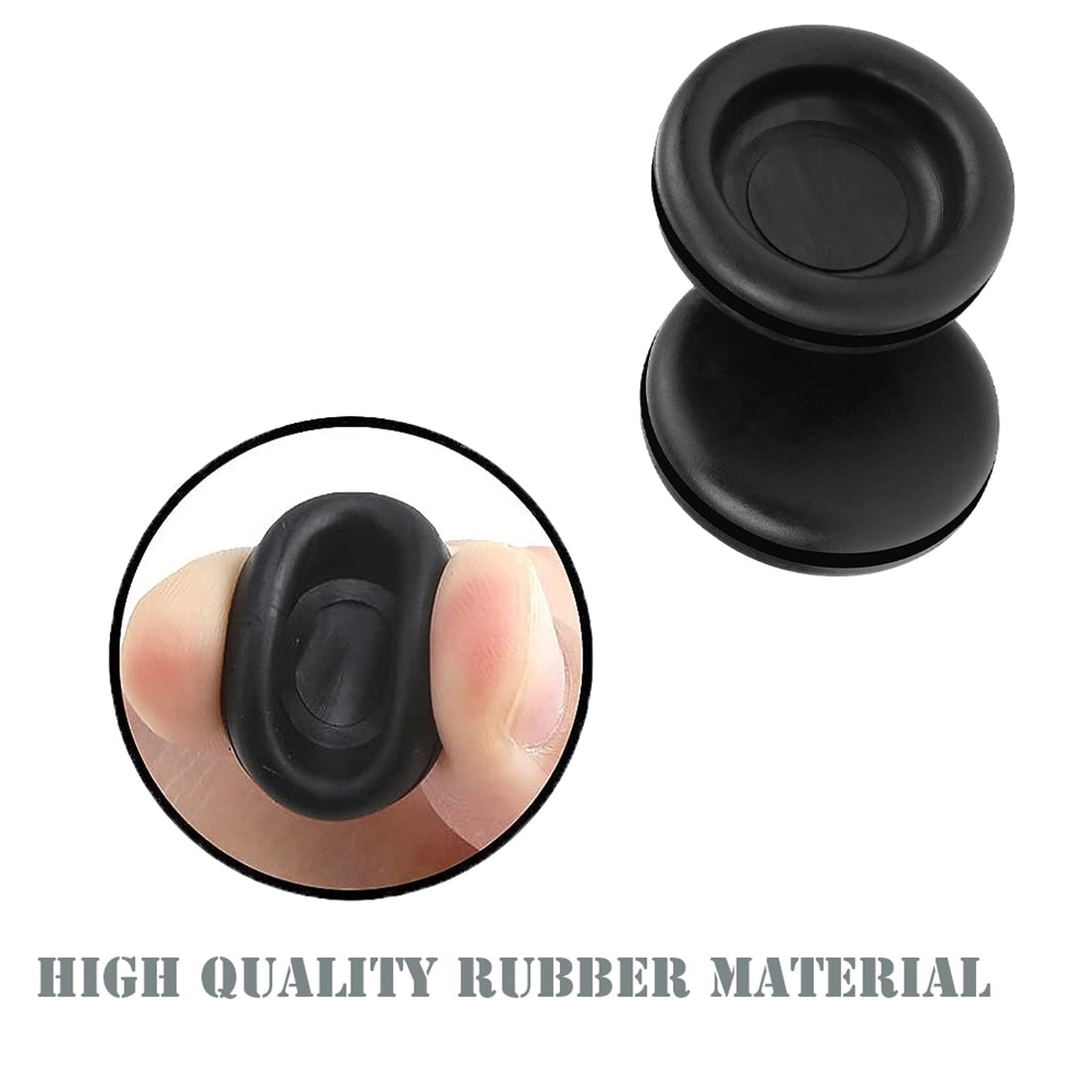
What are the Rubber Grommets how and where it is useful?
Share
What Are Rubber Grommets?
A rubber grommet is a ring or circular shaped device typically used to protect and insulate wires, cables, and pipes as they pass through holes or openings in various materials. The grommet helps to prevent damage or abrasion to the items passing through the hole and shields them from external elements like moisture, dust, or vibrations.
Materials of Rubber Grommets:
Rubber grommets are made from a variety of materials depending on the specific needs of the application. Common materials include:
-
Natural Rubber: Offers excellent elasticity and flexibility. It's typically used in less demanding applications.
-
Nitrile Rubber (Buna-N): Known for its resistance to oil, fuels, and other chemicals, nitrile rubber is commonly used in automotive and industrial applications.
-
Silicone Rubber: Provides excellent high-temperature resistance, making it ideal for applications exposed to heat or extreme conditions.
-
Neoprene Rubber: This material is resistant to weather, ozone, and UV rays, and is commonly used in outdoor applications.
-
EPDM Rubber: Known for its high resistance to heat, water, and weathering, EPDM is often used in automotive and industrial settings.
-
Viton Rubber: A fluorocarbon-based rubber known for its resistance to extreme temperatures, chemicals, and oils. It's often used in more specialized environments.
-
Polyurethane Rubber: A more durable material that is resistant to wear and tear, commonly used in high-stress environments.
Types of Rubber Grommets:
Rubber grommets come in various shapes and configurations, depending on their intended use:
-
Standard Grommets: These are simple rings used to line holes in panels, boards, or other materials to prevent abrasion to cables or pipes.
-
Split Grommets: These grommets have a split or opening, which allows them to be fitted around cables or pipes without having to pass them through a hole. They are useful for retrofitting installations.
-
Flanged Grommets: These grommets have a flange around the edge to provide additional sealing and prevent the grommet from slipping out of place once installed.
-
Large Hole Grommets: These have a larger internal diameter to accommodate larger cables, pipes, or other components that need to be protected.
-
Snap-In Grommets: These are designed to snap into place easily, typically used when retrofitting into an existing hole without additional tools or hardware.
-
Fire-Resistant Grommets: Made from specialized rubber materials that offer fire resistance, these grommets are used in high-temperature or hazardous environments.
How and Where Rubber Grommets Are Useful:
Rubber grommets are used in many industries for various applications:
-
Electrical Applications: Protect electrical cables and wiring that pass through metal panels or other materials, reducing the risk of abrasion, short circuits, and electrical failures.
-
Automotive Industry: Used to insulate and protect cables, hoses, and wires that run through car panels, chassis, or engine components. They prevent wear caused by vibration and exposure to the elements.
-
Industrial and Manufacturing: Protect pipes, wires, and cables in machinery or equipment from abrasion, as well as from moisture, dust, and other contaminants in the production environment.
-
Marine Applications: Rubber grommets help protect cables and pipes that go through metal or fiberglass hulls, shielding them from corrosion and wear caused by the harsh marine environment.
-
Consumer Electronics: Used to prevent damage to internal wiring and components as they pass through the device's outer casing.
-
HVAC: In heating, ventilation, and air conditioning systems, grommets are used to protect pipes and cables that run through panels or walls, minimizing vibration and wear.
-
Construction: Rubber grommets are often used in buildings to protect cables and pipes from sharp edges in metal or concrete walls.
-
Aerospace: For use in aircraft to protect wiring and other components from damage due to vibration and environmental factors.
Features of Rubber Grommets:
-
Protection from Abrasion: Rubber grommets prevent cables, wires, and pipes from being damaged by sharp edges or rough surfaces when passing through holes in metal, plastic, or other materials.
-
Vibration Dampening: They reduce the risk of vibrations causing wear and tear on cables, hoses, or pipes, particularly in machinery or vehicles.
-
Insulation: Rubber grommets can provide electrical insulation, reducing the chance of electrical shorts or damage to wiring in sensitive electrical systems.
-
Weather Resistance: Certain rubber materials like neoprene, EPDM, or silicone offer excellent resistance to the effects of weather, UV rays, and moisture, making them ideal for outdoor or exposed installations.
-
Flexibility: Rubber is a flexible material that can expand to accommodate different cable sizes or installations, making rubber grommets adaptable to a variety of uses.
-
Sealing and Water Resistance: In some cases, rubber grommets also function as seals, preventing the ingress of moisture, dust, or other contaminants that could cause damage to internal components.
-
Ease of Installation: Rubber grommets can be installed without special tools or adhesives, often simply by pressing them into the hole or panel.
-
Durability: Rubber grommets are designed to last long, withstanding regular use, environmental exposure, and mechanical stresses.
-
Wide Range of Sizes: Rubber grommets are available in many different diameters, thicknesses, and configurations to suit a variety of applications.
-
Heat Resistance: Some types of rubber grommets (e.g., silicone) are designed to resist high temperatures, making them suitable for environments like engines, electrical equipment, and more.